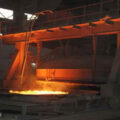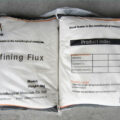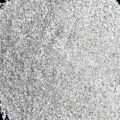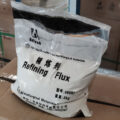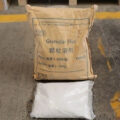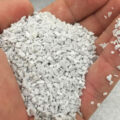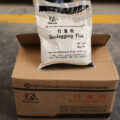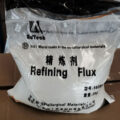Scrap is usually first charged into the aluminum bath in the furnace, where it is melted. As a result of melting the scrap, a surface layer of oxides, nitrides, and entrained metals called dross are formed. The surface layer is treated with aluminum melting flux to remove scum, and the entrained molten metal is released into the melt as much as possible. When the entrained slag is removed, it still contains some molten metal, which is considered as metal melting loss. Due to the large surface area of the fine debris, a high degree of oxidation occurs before the melting is completed, which will lead to excessive melting loss, not only due to the metal loss caused by the oxidation itself, but also a large amount of slag. Due to this large amount of dross, it is usually difficult to release the entrained molten metal, and these molten metal losses tend to become very large.

A large amount of melt loss can be reduced by using flux for aluminum melting. This is achieved by putting the scrap pieces and a suitable flux together and bringing them into contact before the scrap is melted.
One is the aluminum melting flux provides a protective coating to prevent metal oxidation during heating and melting; the other is the oxide that has already existed on the surface of the solid waste or the oxidation formed during the heating and melting process. The material provides a fluxing effect. The end result is that the generation of scum is significantly reduced, and relatively little free molten metal is trapped in the scum.
Another advantage is that the scum handling operation after melting can be omitted. This will greatly save cost and time. In previous practices, waste materials were melted to produce scum or scum with entrained metal, and then treated with flux. The treatment involves applying flux to the surface of the molten metal and pushing it into the flux by a method called agitation, which is a rather time-consuming operation.
To be safe, the furnace burner must usually be slowed down. In addition, as much as 20% of the flux rises to the chimney due to the furnace airflow. By removing these obstacles, furnace productivity has increased by 15% or more. In addition, safety and smoke generation factors are improved.


